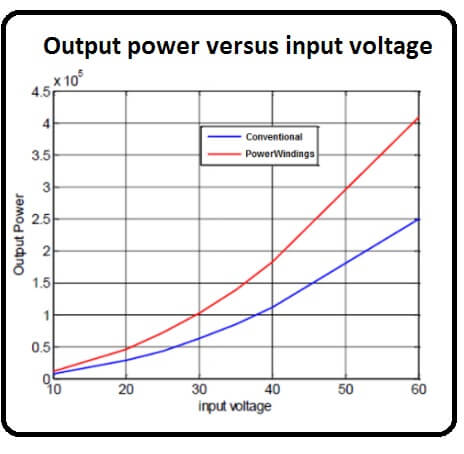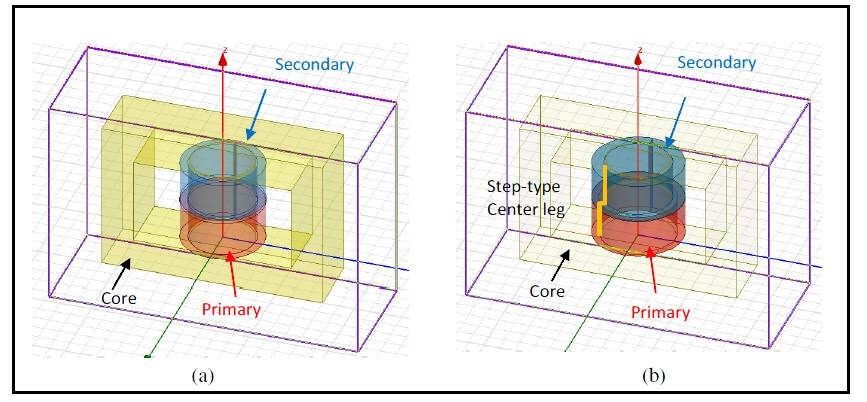
The proposed design achieves higher power efficiency and higher output power than a conventional design.
Greg Waite, CEO of InventionShare, has announced that the PowerWindings transformer design is a significant breakthrough in transformer manufacturing, and so much so that manufacturers can reduce the cost of a transformer by up to 30% using existing tooling and manufacturing processes.
PowerWindings designs were developed by two senior inventors with over 30 years of experience in designing transformers. Bench test results showed a 38.97% increase in output with the same materials, or a 35% reduction in materials for the same output – and the UCLA department of Engineering used the Maxwell simulation software to verify the results. Tests show that efficiency vs input voltage is increased by 5.74% and the output power to input voltage average is 63.97% more with this invention.
Further, UCLA Professor Ethan Wang has written a paper explaining why the PowerWindings transformer designs are superior to current designs and that design benefits should apply to all E type transformers. This invention breakthrough can be easily implemented into the existing manufacturing process with literally no disruption to the production process.
“For a transformer manufacturer this invention fits like a glove. It is a big breakthrough because there is minimal training required to refine the manufacturing process. Having a phenomenal price advantage of up to 30% less with the same or increased power is going to give some manufacturers a huge competitive advantage, increased market share, and higher margins, profit and share price,” said Mr. Waite.
InventionShare is now talking with companies interested in licensing this invention for various vertical, horizontal and geographical markets. The invention, patent application and test results are available for further review by interested parties.

In the split bobbin simulation image, the step-type bobbin embodiment is compared with a conventional split bobbin. The illustration shows the transformer models tested in the Maxwell software. The left is a conventional design, with primary and secondary coils wound on uniform cross-section center leg. The other is the step-bobbin design with primary coil are wound on the wider parts of the step-type center core leg. Credits for both images: The paper Designs & Simulations of Transformers to Improve Power Capacity and Efficiency by Yuanxun Ethan Wang UCLA
InventionShare provides inventors with funding, talent, expert processes to accelerate innovation, patent creation and monetization. Respecting that each of our inventors is the architect and mastermind behind the invention, we work with our inventors in a professional manner as partners helping them take their inventions to market.
Filed Under: News, Transformers




